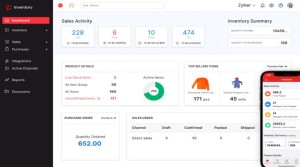Steps to Achieving Financial Independence by Age 40
Becoming financially independent by the age of 40 is tough but possible. It involves careful planning, saving money, and making smart investments.

Many aspire to financial independence by age 40, but it requires strategic planning, discipline, and consistent effort. Here are the key steps to guide you towards this energetic milestone.
1. Set Clear Fiancial Goals
Establish specific, measurable, achievable, relevant, and time-bound (SMART) goals. These goals include saving a certain amount of money, paying off all debts, or reaching a specific net worth. Having clear goals provides direction and motivation.
2. Create a Detailed Budget
The most important part of planning your money is having a budget that breaks everything down. Keep careful track of how much money you make and how much you spend. When you know how you spend your money, you can find ways to save more. Then, put a part of what you earn into savings or investments for the future.
3. Reduce and Eliminate Debt
High-interest debt can significantly hinder your progress towards financial independence. The best way to get out of debt fast is to throw everything you can at it, primarily the debts with the highest interest rates. Those are the ones costing you the most money. Use methods like the debt snowball or avalanche to accelerate the process.
4. Increase Your Income
Look for ways to boost your income. This could be through career advancement, side hustles, freelance work, or investing in income-generating assets. The more money you make, the more you can save and invest. This will help you reach financial freedom faster.
5. Save Aggressively
Set aside a good chunk of your money each time you get paid. Many aiming for early financial independence target saving rates of 50% or more. Automate your savings to ensure consistency and to benefit from compound interest over time.
6. Invest Wisely
Put your money into various investments that match how much risk you're comfortable with and how long you plan to invest. This could include stocks, bonds, real estate, and other things. Using low-cost index funds is an easy and promising way to invest. Starting early gives your money more time to grow.
7. Build Multiple Income Streams
Diversifying your income sources reduces risk and enhances financial stability. This might include rental income, investment dividends, or starting a business.
8. Minimize Lifestyle Inflation
As your income increases, resist the temptation to upgrade your lifestyle correspondingly. Keep your expenses relatively stable and channel the additional income into savings and investments. This practice, "living below your means", is crucial for building wealth.
9. Plan for Major Life Events
Anticipate and plan for significant expenses such as buying a home, having children, or caring for elderly parents. A financial plan for these events ensures you can stay on track with your progress.
10. Regularly Review and Adjust Your Plan
Take a look at your money plan from time to time and make changes if necessary. Life circumstances and financial markets change, so your strategy should remain flexible. Regular check-ins help you stay on the right path and make any changes required.
11. Enhance Your Financial Literacy
Keep learning how to handle money, invest, and manage your finances. Read books, attend seminars, and follow reputable financial blogs and podcasts. The more you know, the better decisions you can make.
12. Network and Seek Mentorship
Surround yourself with like-minded individuals who are also focused on financial independence. Seek Mentorship from those who have successfully achieved this goal. Learning from what others have gone through can give you helpful ideas and inspire you.
Some Outlines of the Steps to Achieving the Milestones
Here, we will explore the steps to achieving this milestone, focusing on financial awareness, setting and achieving financial goals before retirement, and the roles of independent economic and wealth advisors.
Financial Awareness - The Foundation
The journey towards financial independence begins with financial awareness. This involves understanding one's current economic situation, including income, expenses, debts, and assets. Moreover, educating oneself about personal finance, investment options, and the implications of different financial decisions is essential.
Setting and Achieving Financial Goals Before Retirement
Once financial awareness is established, the next step is to set clear, achievable financial goals. These goals should be clear, able to be measured, realistic, meaningful, and have a deadline (SMART). Example includes the following.
- Paying off debt.
- Saving for a down payment on a home.
- Building an emergency fund.
- Investing for retirement.
The Role of Independent Financial and Wealth Advisors
While self-education is important, consulting with professionals can provide tailored advice and strategies. An independent financial advisor can help create a comprehensive financial plan considering one's unique circumstances and goals. These advisors give unbiased advice because they aren't connected to any particular financial products or companies. Their expertise can be invaluable in tax planning, investment strategies, and risk management.
A Holistic Approach to Achieving Financial Independence
Achieving financial independence by 40 requires a holistic approach integrating financial awareness, goal setting, disciplined saving, strategic investing, and professional advice. It is not solely about accumulating wealth but also about creating a sustainable lifestyle that aligns with one's values and aspirations. Regularly reviewing and adjusting financial plans in response to changing circumstances is essential to stay on track.
Becoming financially independent by the age of 40 is tough but possible. It involves careful planning, saving money, and making smart investments. You need to set clear financial goals, make a detailed budget, pay off debts, find ways to earn more, save a lot, invest wisely, and stay flexible with your money. It's important to have different ways of earning money, avoid spending too much when you start making more, and plan for big life events. Keep checking and adjusting your financial plan, learn more about money, and get advice from someone experienced. Following these steps helps you achieve financial independence and a secure future before you reach retirement age.
Use the retirement calculator to actively plan your retirement.

Many aspire to financial independence by age 40, but it requires strategic planning, discipline, and consistent effort. Here are the key steps to guide you towards this energetic milestone.
1. Set Clear Fiancial Goals
Establish specific, measurable, achievable, relevant, and time-bound (SMART) goals. These goals include saving a certain amount of money, paying off all debts, or reaching a specific net worth. Having clear goals provides direction and motivation.
2. Create a Detailed Budget
The most important part of planning your money is having a budget that breaks everything down. Keep careful track of how much money you make and how much you spend. When you know how you spend your money, you can find ways to save more. Then, put a part of what you earn into savings or investments for the future.
3. Reduce and Eliminate Debt
High-interest debt can significantly hinder your progress towards financial independence. The best way to get out of debt fast is to throw everything you can at it, primarily the debts with the highest interest rates. Those are the ones costing you the most money. Use methods like the debt snowball or avalanche to accelerate the process.
4. Increase Your Income
Look for ways to boost your income. This could be through career advancement, side hustles, freelance work, or investing in income-generating assets. The more money you make, the more you can save and invest. This will help you reach financial freedom faster.
5. Save Aggressively
Set aside a good chunk of your money each time you get paid. Many aiming for early financial independence target saving rates of 50% or more. Automate your savings to ensure consistency and to benefit from compound interest over time.
6. Invest Wisely
Put your money into various investments that match how much risk you're comfortable with and how long you plan to invest. This could include stocks, bonds, real estate, and other things. Using low-cost index funds is an easy and promising way to invest. Starting early gives your money more time to grow.
7. Build Multiple Income Streams
Diversifying your income sources reduces risk and enhances financial stability. This might include rental income, investment dividends, or starting a business.
8. Minimize Lifestyle Inflation
As your income increases, resist the temptation to upgrade your lifestyle correspondingly. Keep your expenses relatively stable and channel the additional income into savings and investments. This practice, "living below your means", is crucial for building wealth.
9. Plan for Major Life Events
Anticipate and plan for significant expenses such as buying a home, having children, or caring for elderly parents. A financial plan for these events ensures you can stay on track with your progress.
10. Regularly Review and Adjust Your Plan
Take a look at your money plan from time to time and make changes if necessary. Life circumstances and financial markets change, so your strategy should remain flexible. Regular check-ins help you stay on the right path and make any changes required.
11. Enhance Your Financial Literacy
Keep learning how to handle money, invest, and manage your finances. Read books, attend seminars, and follow reputable financial blogs and podcasts. The more you know, the better decisions you can make.
12. Network and Seek Mentorship
Surround yourself with like-minded individuals who are also focused on financial independence. Seek Mentorship from those who have successfully achieved this goal. Learning from what others have gone through can give you helpful ideas and inspire you.
Some Outlines of the Steps to Achieving the Milestones
Here, we will explore the steps to achieving this milestone, focusing on financial awareness, setting and achieving financial goals before retirement, and the roles of independent economic and wealth advisors.
Financial Awareness - The Foundation
The journey towards financial independence begins with financial awareness. This involves understanding one's current economic situation, including income, expenses, debts, and assets. Moreover, educating oneself about personal finance, investment options, and the implications of different financial decisions is essential.
Setting and Achieving Financial Goals Before Retirement
Once financial awareness is established, the next step is to set clear, achievable financial goals. These goals should be clear, able to be measured, realistic, meaningful, and have a deadline (SMART). Example includes the following.
- Paying off debt.
- Saving for a down payment on a home.
- Building an emergency fund.
- Investing for retirement.
The Role of Independent Financial and Wealth Advisors
While self-education is important, consulting with professionals can provide tailored advice and strategies. An independent financial advisor can help create a comprehensive financial plan considering one's unique circumstances and goals. These advisors give unbiased advice because they aren't connected to any particular financial products or companies. Their expertise can be invaluable in tax planning, investment strategies, and risk management.
A Holistic Approach to Achieving Financial Independence
Achieving financial independence by 40 requires a holistic approach integrating financial awareness, goal setting, disciplined saving, strategic investing, and professional advice. It is not solely about accumulating wealth but also about creating a sustainable lifestyle that aligns with one's values and aspirations. Regularly reviewing and adjusting financial plans in response to changing circumstances is essential to stay on track.
Becoming financially independent by the age of 40 is tough but possible. It involves careful planning, saving money, and making smart investments. You need to set clear financial goals, make a detailed budget, pay off debts, find ways to earn more, save a lot, invest wisely, and stay flexible with your money. It's important to have different ways of earning money, avoid spending too much when you start making more, and plan for big life events. Keep checking and adjusting your financial plan, learn more about money, and get advice from someone experienced. Following these steps helps you achieve financial independence and a secure future before you reach retirement age.
Use the retirement calculator to actively plan your retirement.
Conversation
Latest Blogs
© Blog CoolCalculator, Explore CoolCalculator, your destination for the latest insights, tips, and updates on the world of online calculators. Stay informed and make your calculations smarter with our blog. ,
Designed
by Saad Media Team , Team Lead M.Rizwan Akhtar












